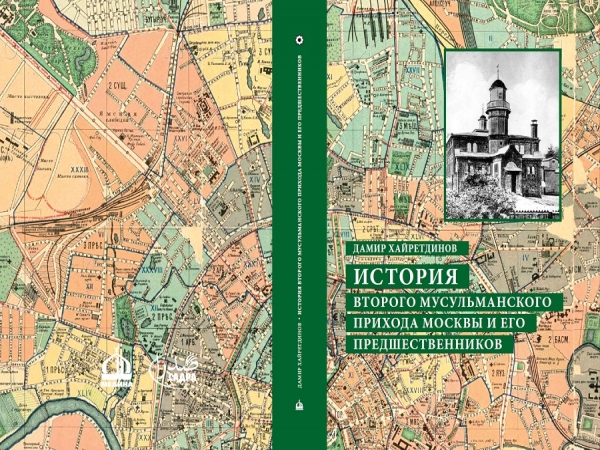“The history of the 2nd Muslim parish and its predecessors” — a unique work written by Damir Khayretdinov, Russian historian and ethnologist, candidate in historical sciences, — has finally seen the light. This work is of great importance for the development of Islamic studies in Russia.
The research is devoted to the institutionalization of the 2nd Muslim parish in Moscow, which had formed in the north districts of the city by 1894 and further led to the construction of the existing Moscow Cathedral Mosque in 1904-1905, located in Vypolzov lane. This parish had numerous predecessors — places with a large number of Muslims living in mostly Christian environment. The medieval sites include the Derbentskoye area (near the Turgenevskaya metro station), the Palace of the Kasimov princes (Myasnitskaya street), the Yard of the sultan of Khiva (Maroseyka street), etc. More recent sites include the house of the Khoshalov-Izmaylovs (Sretenka street), the house of Saltykov and the house of Baybekov on the Tsvetnoy boulevard.
The work contains archive documents devoted to the life of the 2nd Muslim parish, the opening of the Mosque in the Vypolzov lane, and its first years from the foundations of Moscow, Saint Petersburg and Ufa.
“The history of the 2nd Muslim parish and its predecessors” was published with the support of the Religious Board of Muslims of the Russian Federation, the Moscow Islamic Institute and the Ibn Sina Islamic Culture Research Foundation and was prepared for publication by the Sadra publishing house.
The publication of the edition was timed to coincide with the 115th anniversary of the Moscow Cathedral Mosque, 25th anniversary of the Religious Board of Muslims of the Russian Federation, 20th anniversary of the Moscow Islamic Institute and the 60th anniversary of mufti sheikh Ravil Gaynutdin, religious leader of Russian Muslims.



